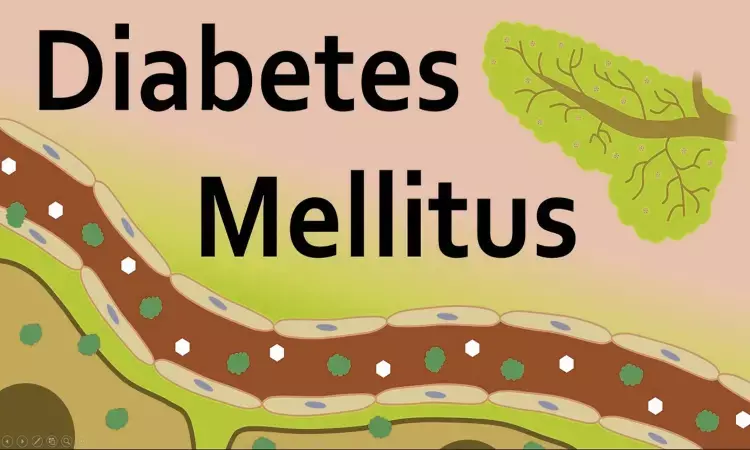- Home
- Medical news & Guidelines
- Anesthesiology
- Cardiology and CTVS
- Critical Care
- Dentistry
- Dermatology
- Diabetes and Endocrinology
- ENT
- Gastroenterology
- Medicine
- Nephrology
- Neurology
- Obstretics-Gynaecology
- Oncology
- Ophthalmology
- Orthopaedics
- Pediatrics-Neonatology
- Psychiatry
- Pulmonology
- Radiology
- Surgery
- Urology
- Laboratory Medicine
- Diet
- Nursing
- Paramedical
- Physiotherapy
- Health news
- Fact Check
- Bone Health Fact Check
- Brain Health Fact Check
- Cancer Related Fact Check
- Child Care Fact Check
- Dental and oral health fact check
- Diabetes and metabolic health fact check
- Diet and Nutrition Fact Check
- Eye and ENT Care Fact Check
- Fitness fact check
- Gut health fact check
- Heart health fact check
- Kidney health fact check
- Medical education fact check
- Men's health fact check
- Respiratory fact check
- Skin and hair care fact check
- Vaccine and Immunization fact check
- Women's health fact check
- AYUSH
- State News
- Andaman and Nicobar Islands
- Andhra Pradesh
- Arunachal Pradesh
- Assam
- Bihar
- Chandigarh
- Chattisgarh
- Dadra and Nagar Haveli
- Daman and Diu
- Delhi
- Goa
- Gujarat
- Haryana
- Himachal Pradesh
- Jammu & Kashmir
- Jharkhand
- Karnataka
- Kerala
- Ladakh
- Lakshadweep
- Madhya Pradesh
- Maharashtra
- Manipur
- Meghalaya
- Mizoram
- Nagaland
- Odisha
- Puducherry
- Punjab
- Rajasthan
- Sikkim
- Tamil Nadu
- Telangana
- Tripura
- Uttar Pradesh
- Uttrakhand
- West Bengal
- Medical Education
- Industry
Saliva test a painless method for monitoring diabetes

Scientists have always been in search for a more cost-effective , non-invasive and specific diabetes monitoring compared to blood sugar testing.
Brazilian researchers have found that Saliva could be used instead of blood to monitor diabetes in a method proposed in research involving the University of Strathclyde.
Lab tests of the saliva process have shown promising results with an accuracy rate of 95.2%. The research has been published in the journal PLOS ONE.
Blood sugar testing on regular basis may lead to non compliance as it is invasive, painful and costly. Scientists have been in look out to develop alternative test to the current prevalent practice of monitoring blood sugar.
Dr Matthew Baker, a Reader in Strathclyde's Department of Pure and Applied Chemistry and lead researcher in the project, said: "Frequent monitoring of diabetes is essential for improved glucose control and to delay clinical complications related to the condition. Early screening is also paramount in reducing these complications worldwide.
"Blood analysis for screening, monitoring and diagnosing diabetes is widely practised but is quite invasive and painful. The constant need of piercing the fingers several times daily for most patients may lead to the development of finger calluses, as well as difficulty in obtaining blood samples; furthermore, not everyone would want to give blood and there are circumstances in which it could be dangerous.
"Saliva reflects several physiological functions of the body, such as emotional, hormonal, nutritional and metabolic, and so its biomarkers could be an alternative to blood for robust early detection and monitoring. It is easy to collect, non-invasive, convenient to store and requires less handling than blood during clinical procedures, while also being environmentally efficient. It also contains analytes with real-time monitoring value which can be used to check a person's condition."
Dr Robinson Sabino-Silva, an associate professor at Federal University of Uberlandia (UFU) and a partner in the research, said: "The present protocol used in the infrared platform is able to detect spectral biomarkers without reagents. The combination of a non-invasive salivary collection and a reagent-free analysis permit us to monitor diabetes with a sustainable platform classified as green technology."
The lab tests used a scientific system known as Attenuated total reflectance Fourier transform infrared (ATR-FTIR) spectroscopy. This has been used in the diagnosis of several diseases, although its applications in the monitoring of diabetic treatment have begun to emerge only recently. Samples were assessed in three categories - diabetic, non-diabetic and insulin-treated diabetic - and two potential diagnostic biomarkers were identified.
The researchers are hopeful that the process they have developed could be used for both Type 1 and Type 2 diabetes, although further study will be required to confirm this.
For further reference log on to:
http://dx.doi.org/10.1371/journal.pone.0223461
Dr Kamal Kant Kohli-MBBS, DTCD- a chest specialist with more than 30 years of practice and a flair for writing clinical articles, Dr Kamal Kant Kohli joined Medical Dialogues as a Chief Editor of Medical News. Besides writing articles, as an editor, he proofreads and verifies all the medical content published on Medical Dialogues including those coming from journals, studies,medical conferences,guidelines etc. Email: drkohli@medicaldialogues.in. Contact no. 011-43720751


